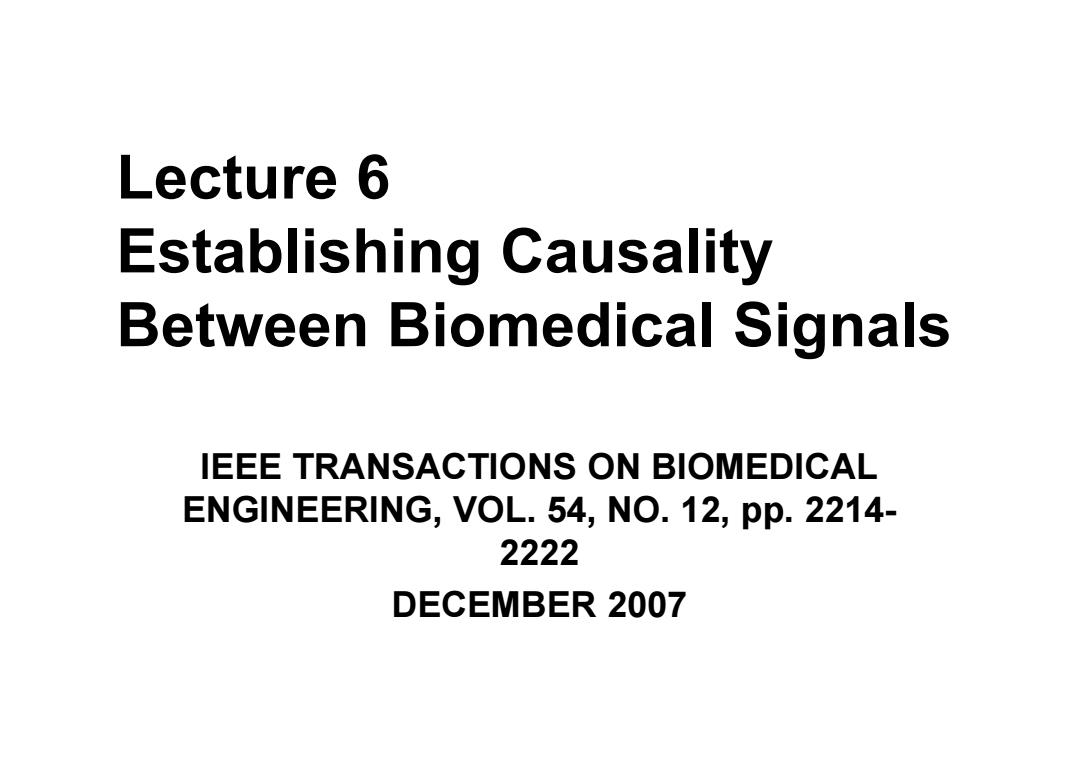
Lecture 6 Establishing Causality Between Biomedical Signals IEEE TRANSACTIONS ON BIOMEDICAL ENGINEERING,VOL.54,NO.12,pp.2214- 2222 DECEMBER 2007
Lecture 6 Establishing Causality Between Biomedical Signals IEEE TRANSACTIONS ON BIOMEDICAL ENGINEERING, VOL. 54, NO. 12, pp. 2214- 2222 DECEMBER 2007
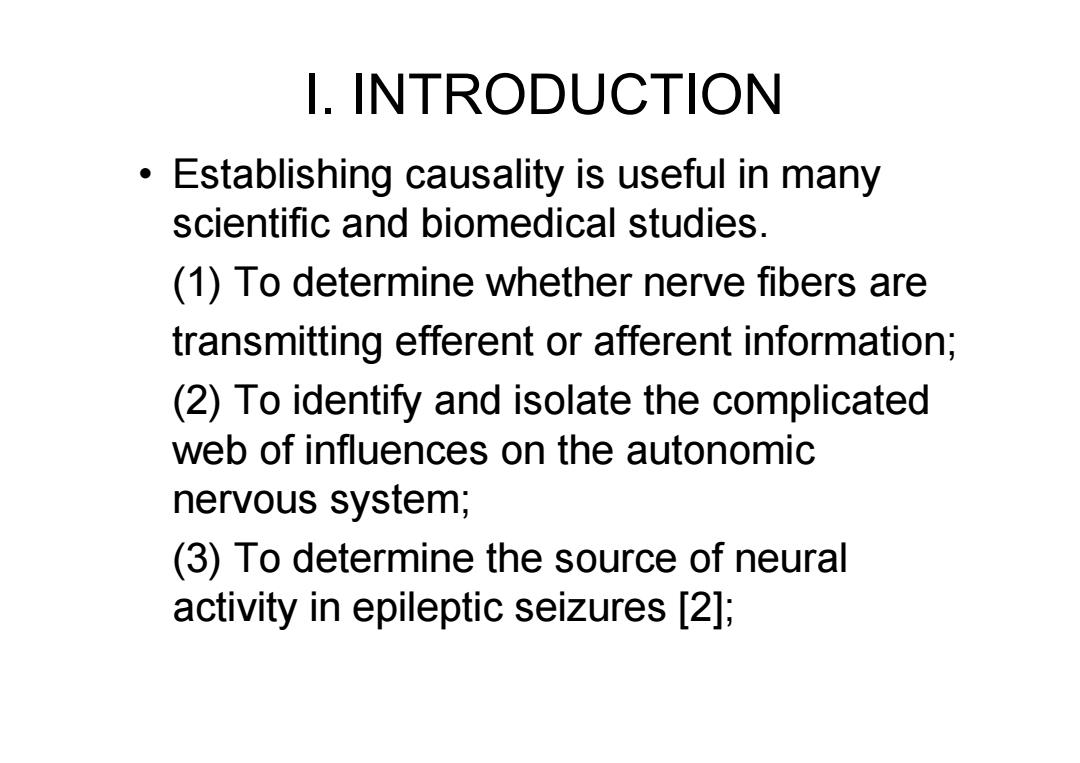
I.INTRODUCTION Establishing causality is useful in many scientific and biomedical studies. (1)To determine whether nerve fibers are transmitting efferent or afferent information; (2)To identify and isolate the complicated web of influences on the autonomic nervous system; (3)To determine the source of neural activity in epileptic seizures [2];
I. INTRODUCTION • Establishing causality is useful in many scientific and biomedical studies. (1) To determine whether nerve fibers are transmitting efferent or afferent information; (2) To identify and isolate the complicated web of influences on the autonomic nervous system; (3) To determine the source of neural activity in epileptic seizures [2];
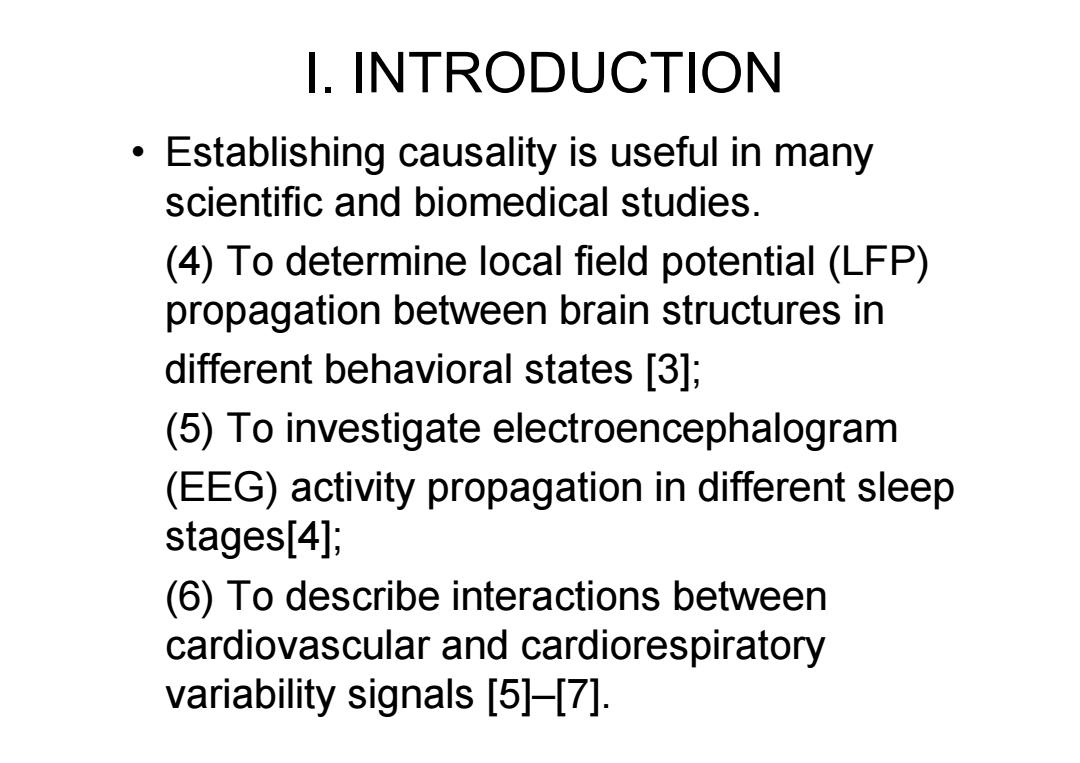
I.INTRODUCTION Establishing causality is useful in many scientific and biomedical studies. (4)To determine local field potential (LFP) propagation between brain structures in different behavioral states [3]; (5)To investigate electroencephalogram (EEG)activity propagation in different sleep stages[4]; (6)To describe interactions between cardiovascular and cardiorespiratory variability signals [5]-[7]
I. INTRODUCTION • Establishing causality is useful in many scientific and biomedical studies. (4) To determine local field potential (LFP) propagation between brain structures in different behavioral states [3]; (5) To investigate electroencephalogram (EEG) activity propagation in different sleep stages[4]; (6) To describe interactions between cardiovascular and cardiorespiratory variability signals [5]–[7]
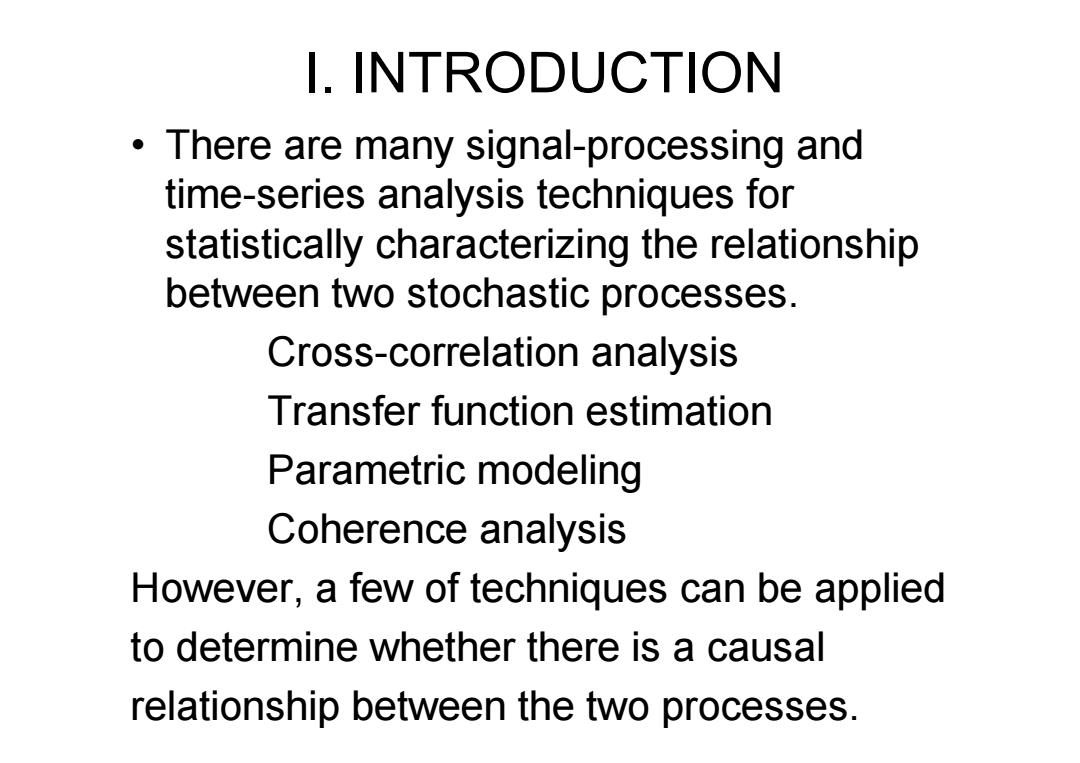
I.INTRODUCTION There are many signal-processing and time-series analysis techniques for statistically characterizing the relationship between two stochastic processes. Cross-correlation analysis Transfer function estimation Parametric modeling Coherence analysis However,a few of techniques can be applied to determine whether there is a causal relationship between the two processes
I. INTRODUCTION • There are many signal-processing and time-series analysis techniques for statistically characterizing the relationship between two stochastic processes. Cross-correlation analysis Transfer function estimation Parametric modeling Coherence analysis However, a few of techniques can be applied to determine whether there is a causal relationship between the two processes
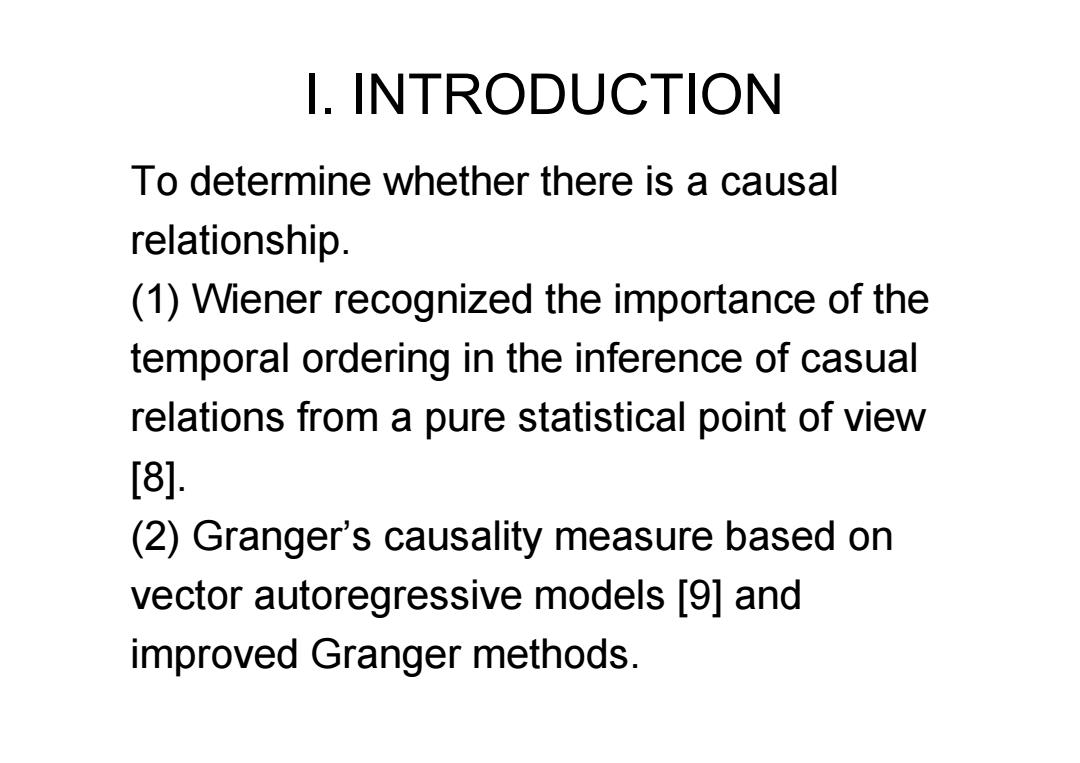
I.INTRODUCTION To determine whether there is a causal relationship. (1)Wiener recognized the importance of the temporal ordering in the inference of casual relations from a pure statistical point of view [8]. (2)Granger's causality measure based on vector autoregressive models [9]and improved Granger methods
I. INTRODUCTION To determine whether there is a causal relationship. (1) Wiener recognized the importance of the temporal ordering in the inference of casual relations from a pure statistical point of view [8]. (2) Granger’s causality measure based on vector autoregressive models [9] and improved Granger methods